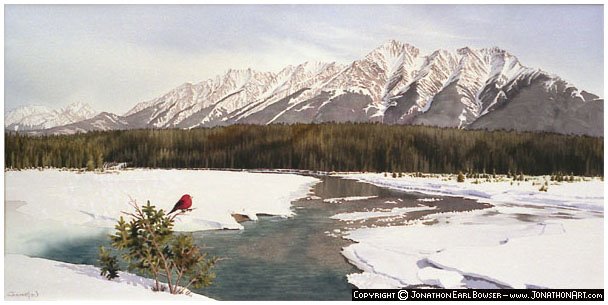Imperfect Hope has slowed somewhat, mostly due to shorter writing sessions of late as other things to deal with continue to crop up. I did give in and do a bit of a rewrite on pieces of Randir's first scene, there were some poorly blocked out sections that just didn't mesh with what I'd written about K'tath culture. However, in rewriting, I discovered some new questions that I mulled over this week, aspects of the k'tath culture that need detail.
Basically, I was starting Randir's tale "in media res" (the story has already started, and I pick up the action in mid-act) during his naming quest. The naming quest is another aspect of the k'tath that I'd noted decades ago in Brandis' IFGS history, that Kel and Sen went on a quest early in their youth to discover their "true name". Other than this aspect of k'tath culture existing, I'd never gone beyond "this happened, and so now...". However, Imperfect Hope offers me a chance to show this detail much more colorfully.
One idea that emerged from the primordial soup I call "my imagination" was that all K'tath had a childhood name that stayed with them while they were young. When the time comes for their name quest, their krathen family performs a tiny bit of krathen magic that effectively takes the name from the younglings memory (not completely, but enough that during his journey, he'll have more and more difficulty remembering his child-name until he discovers his adult name, at which point child name is forgotten completely. I've combined that with the coming of age aspect of the youngling learning whether he will become Krath, Kel, or Sen during the same quest, it is tied in (some as yet undecided way) to the selection/bestowment of the adult name. In Randir's case, I'm still writing the naming quest scene, so exactly how it comes about is uncertain, I've several ideas competing for the lead right now. At some point, one will seem to be the best fit, and it will come together.
This is an aspect of writing that comes up with me rather often. THough I've the plot line well outlined, event following event etc, I'll be writing, and some small aspect of the scene will take on more and more life as my imagination grabs it and runs with it. Sometimes it'll be good, sometimes it'll flop badly, and I'll end up dumping several paragraphs during the first draft because it just doesn't fit. A fair amount of it ends up staying just to see if I can come up with ideas that will make it fit better later.
In Randir's opening scene, however, I've pieced together lots of lore from the IFGS D'oril and added much more content. I'm expounding on the concept that the guardians (Elorna and the others) have moralistic rules that prevent them from interfering directly in the affairs of their chosen people, that the dark guardians (Seta and the others) have the same rules, but are more able/willing to bend them, which tends to give them temporary advantages in the god wars that they wage/play in. The balance expects that "the bad guys" will cheat, and that "the good guys" have to work extra hard to overcome. That, in essence, is one of the themes of Imperfect Hope.
I think the concept that "the bad guys cheat, and good has to work extra hard as a result" is a hidden theme in many fantasy works. Sometimes it's hidden under the guise of "evil takes the easier path, but in the end...", sometimes the badguys find a loophole in some natural law. In my case, I've set up a higher authority that the guardians and dark guardians answer to, this mirrors to some degree basic human civilization. Criminals ("evil") will bend or break the rules to get what they want, sometimes because they don't care, sometime because they assume they won't be caught, and sometimes just because they want to evoke a little chaos in the world. Am I equating my dark guardians with criminals? Not really. Just pointing out some behavioral similarities. I think. I'll have to take half my brain out and have a dialogue with it.....
Anyway, more to come, I'm sure.
Clear skies,
Jim


